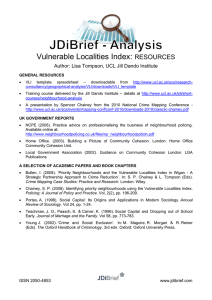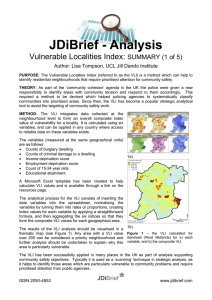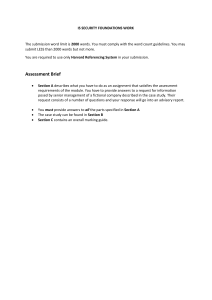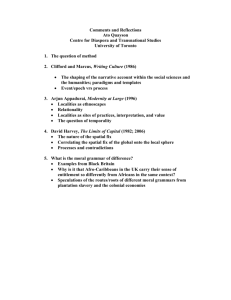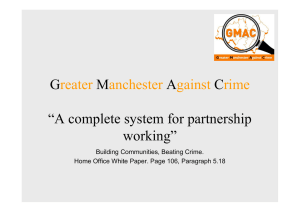JDiBrief - Analysis Vulnerable Localities Index: PURPOSE & THEORY (2 of 5)
advertisement
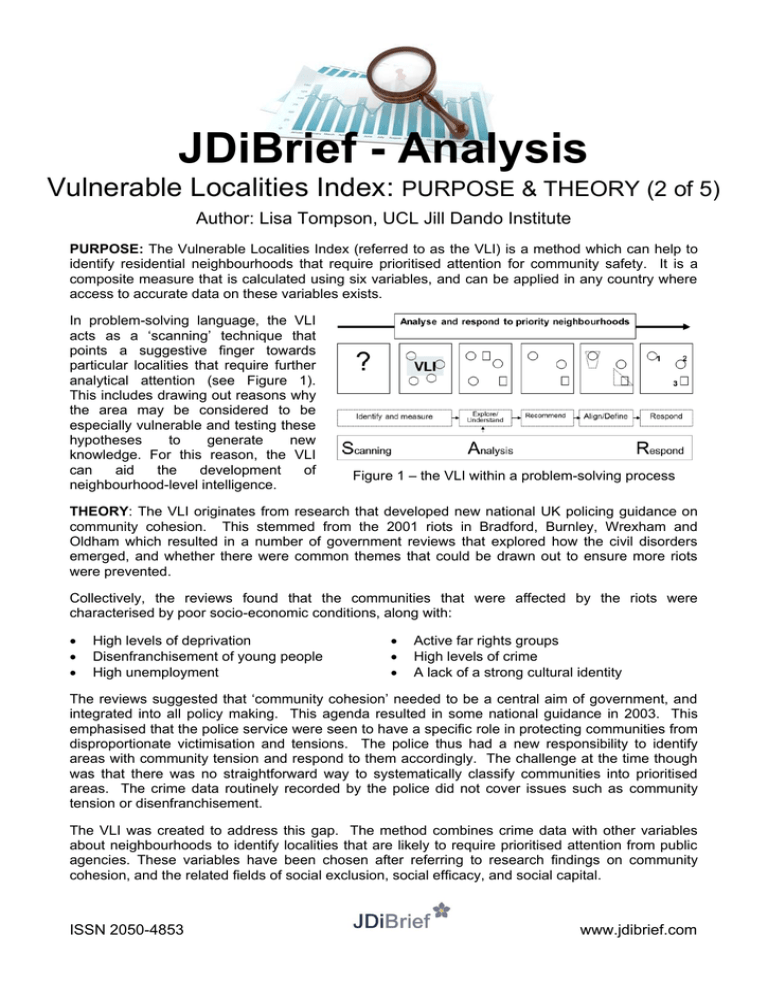
JDiBrief - Analysis Vulnerable Localities Index: PURPOSE & THEORY (2 of 5) Author: Lisa Tompson, UCL Jill Dando Institute PURPOSE: The Vulnerable Localities Index (referred to as the VLI) is a method which can help to identify residential neighbourhoods that require prioritised attention for community safety. It is a composite measure that is calculated using six variables, and can be applied in any country where access to accurate data on these variables exists. In problem-solving language, the VLI acts as a ‘scanning’ technique that points a suggestive finger towards particular localities that require further analytical attention (see Figure 1). This includes drawing out reasons why the area may be considered to be especially vulnerable and testing these hypotheses to generate new knowledge. For this reason, the VLI can aid the development of neighbourhood-level intelligence. Figure 1 – the VLI within a problem-solving process THEORY: The VLI originates from research that developed new national UK policing guidance on community cohesion. This stemmed from the 2001 riots in Bradford, Burnley, Wrexham and Oldham which resulted in a number of government reviews that explored how the civil disorders emerged, and whether there were common themes that could be drawn out to ensure more riots were prevented. Collectively, the reviews found that the communities that were affected by the riots were characterised by poor socio-economic conditions, along with: High levels of deprivation Disenfranchisement of young people High unemployment Active far rights groups High levels of crime A lack of a strong cultural identity The reviews suggested that ‘community cohesion’ needed to be a central aim of government, and integrated into all policy making. This agenda resulted in some national guidance in 2003. This emphasised that the police service were seen to have a specific role in protecting communities from disproportionate victimisation and tensions. The police thus had a new responsibility to identify areas with community tension and respond to them accordingly. The challenge at the time though was that there was no straightforward way to systematically classify communities into prioritised areas. The crime data routinely recorded by the police did not cover issues such as community tension or disenfranchisement. The VLI was created to address this gap. The method combines crime data with other variables about neighbourhoods to identify localities that are likely to require prioritised attention from public agencies. These variables have been chosen after referring to research findings on community cohesion, and the related fields of social exclusion, social efficacy, and social capital. ISSN 2050-4853 www.jdibrief.com
